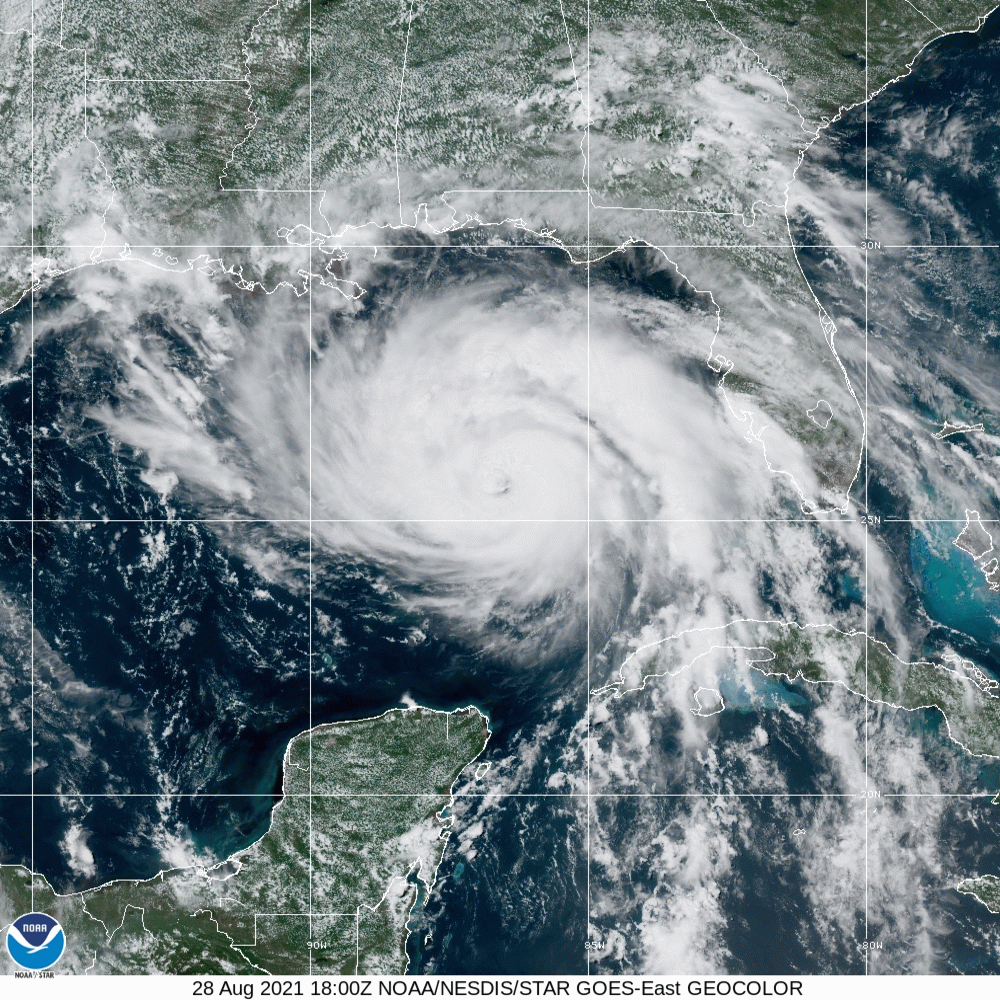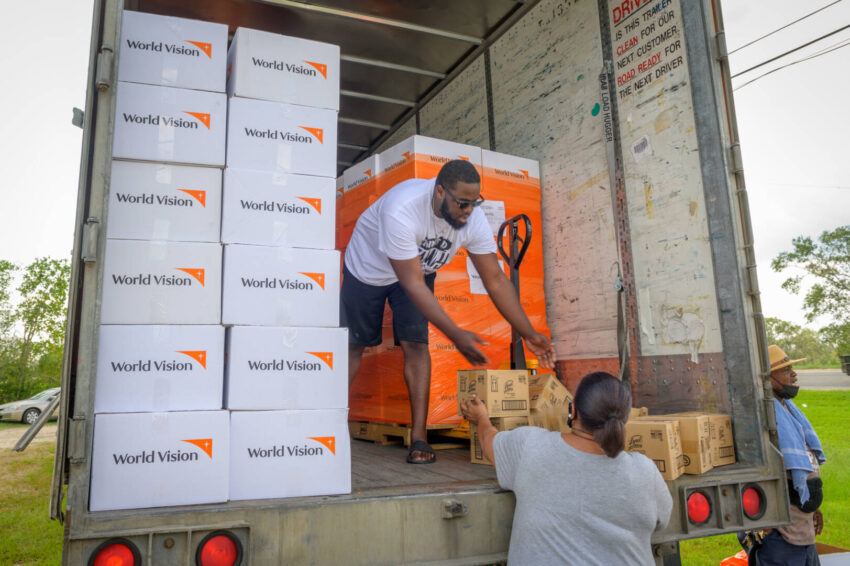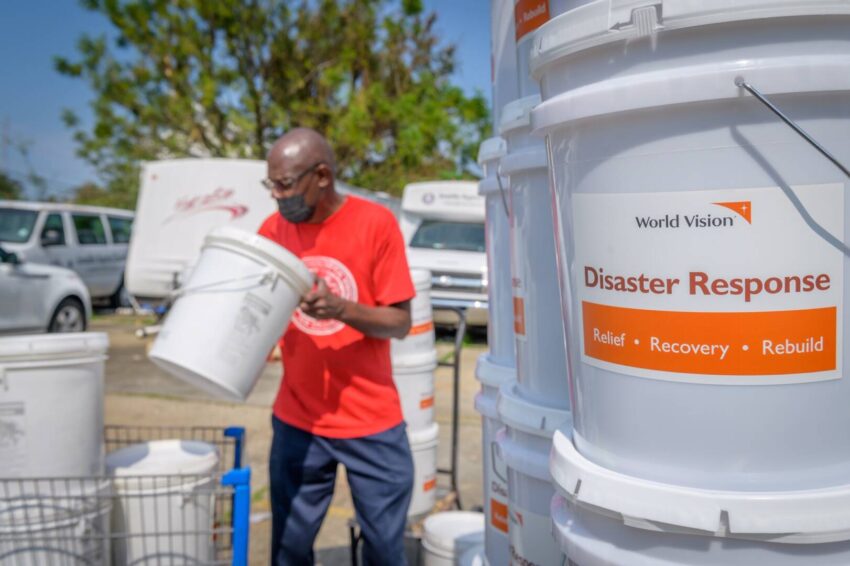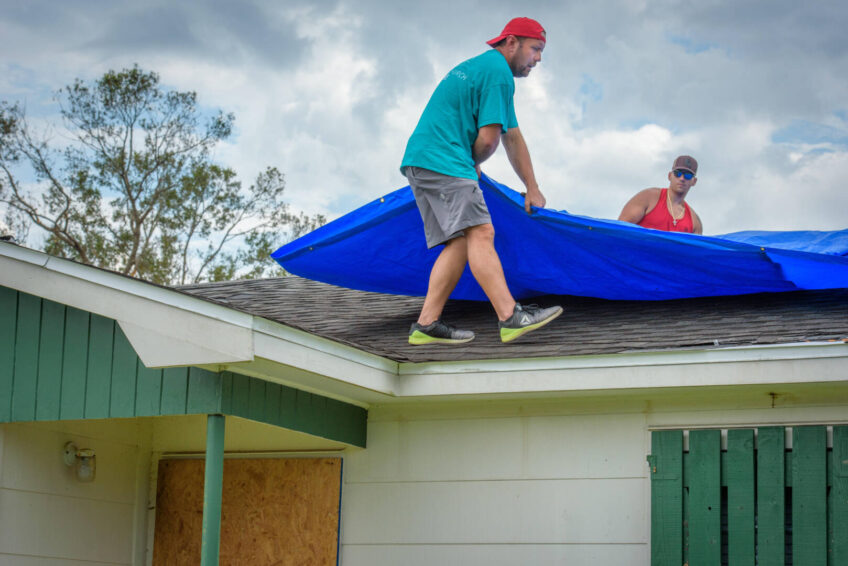Hurricane Ida, one of the most powerful hurricanes to strike the United States, unleashed days of misery and destruction. It made landfall in Louisiana on August 29, 2021, coinciding with the 16th anniversary of Hurricane Katrina’s devastating impact, and continued to wreak havoc through torrential rains that pounded the Northeast.
Ida made landfall near Port Fourchon, Louisiana, as an “extremely dangerous” Category 4 storm with sustained winds of 150 mph. The hurricane left a trail of widespread damage, particularly affecting New Orleans and southern Louisiana, leading to extensive flooding and power outages. The storm claimed dozens of lives and forced thousands of residents to evacuate.

Hurricane Ida: Facts, FAQs, and how to help
Explore facts and frequently asked questions about hurricanes and Hurricane Ida, and learn how you can help people affected by disasters in the U.S.
- Fast facts: Hurricane Ida
- How did Hurricane Ida develop?
- Why was Hurricane Ida so destructive?
- What were the worst hurricanes in U.S. history?
- What was World Vision’s response to Hurricane Ida?
- How can I help people affected by hurricanes and other disasters in the U.S.?
Fast facts: Hurricane Ida
- On August 29, 2021, Hurricane Ida made landfall near Port Fourchon, Louisiana, as a Category 4 hurricane with sustained winds of 150 mph.
- The storm’s landfall coincided with the 16th anniversary of Hurricane Katrina’s landfall in southeast Louisiana and Mississippi in 2005.
- As of September 2021, Hurricane Ida had resulted in 91 deaths across nine states. It left a path of destruction that spanned from the parishes of Louisiana to the foothills of Appalachia and all the way to the boroughs of New York, according to the National Oceanic and Atmospheric Administration (NOAA).
- Hurricane Ida tied Hurricane Laura (2020) and the Last Island Hurricane (1856) as the strongest hurricanes ever recorded to hit Louisiana.
- The storm brought heavy rainfall and flash flooding as it moved northward through the United States, affecting states like Mississippi, Tennessee, and New York.
- The hurricane shut down refineries, disrupting production and resulting in increased gas prices.
How did Hurricane Ida develop?
Ida formed as a tropical depression in the Caribbean Sea on August 26, 2021, and increased to a hurricane the next day before making landfall over Cuba. The storm then strengthened to a Category 4 as it moved toward the Louisiana coast.
Why was Hurricane Ida so destructive?
Hurricane Ida’s destructive impact in 2021 stemmed from its extensive reach, inflicting widespread destruction from Louisiana to the Northeast due to flooding and heavy rainfall. The economic toll of the damage caused is estimated at $75 billion, according to the NOAA’s National Centers for Environmental Information.
What were the worst hurricanes in U.S. history?
Some of the most devastating hurricanes in U.S. history include the Great Labor Day Hurricane in 1935, the most intense hurricane to hit the U.S., and Hurricane Camille in 1969, both Category 5 storms causing significant damage. Hurricane Andrew in 1992, a Category 5 hurricane, struck southern Florida before impacting central Louisiana as a Category 3 hurricane.
Among the costliest hurricanes were Hurricane Katrina in 2005, which caused $192.5 billion* in damages and catastrophic flooding on the Gulf Coast, and Hurricane Harvey in 2017, resulting in $152.5 billion* in damages due to unprecedented rainfall and severe flooding in Texas. Hurricane Ian in 2022 added to this list, causing $114 billion* in damages as it devastated the Gulf Coast of Florida before making landfall in South Carolina.
*Costs have been adjusted for inflation.
What was World Vision’s response to Hurricane Ida?
In the wake of the hurricane’s devastation, World Vision quickly responded by sending four truckloads of critically needed supplies to the hardest-hit communities. Working closely with our church partners in Louisiana, we reached 12,000 people with essential resources, including food, clean water, tents, sanitizing wipes, generators, flashlights, diapers, and clothing.
Michelle and her 6-year-old son, Elijah, were among the families to get supplies from a World Vision–sponsored distribution at Israelite Baptist Church in New Orleans, Louisiana. Michelle was one of over 1 million people who experienced power outages due to the storm. She expressed her heartfelt gratitude to our generous donors. “Thank you very much. Every little thing helps,” said Michelle. “We’re blessed.”
Israelite Baptist Church pastor Emmanuel Smith Jr. said he hoped families felt cared for and that they saw “the helping hands of our Lord and Savior.” He also expressed his gratitude for World Vision’s support. “Without them being a partner and making products available, it would be impossible for us to do this job.”
Despite damage to our storehouse in the Bronx, New York, our staff remained safe and continued operations. We collaborated with our existing partners to give families much-needed cleaning kits and sanitizing supplies, including PPE and sanitizing wipes. As of September 17, 2021, we had distributed emergency relief supplies to approximately 5,000 people in New York.
How can I help people affected by hurricanes and other disasters in the U.S.?
- Pray: Join us in praying for people affected by hurricanes and other powerful storms.
- Give: Your gift will help provide essential care to children and families impacted by hurricanes and other disasters in the U.S.
Laura Reinhardt of World Vision’s U.S. staff contributed to this article.




